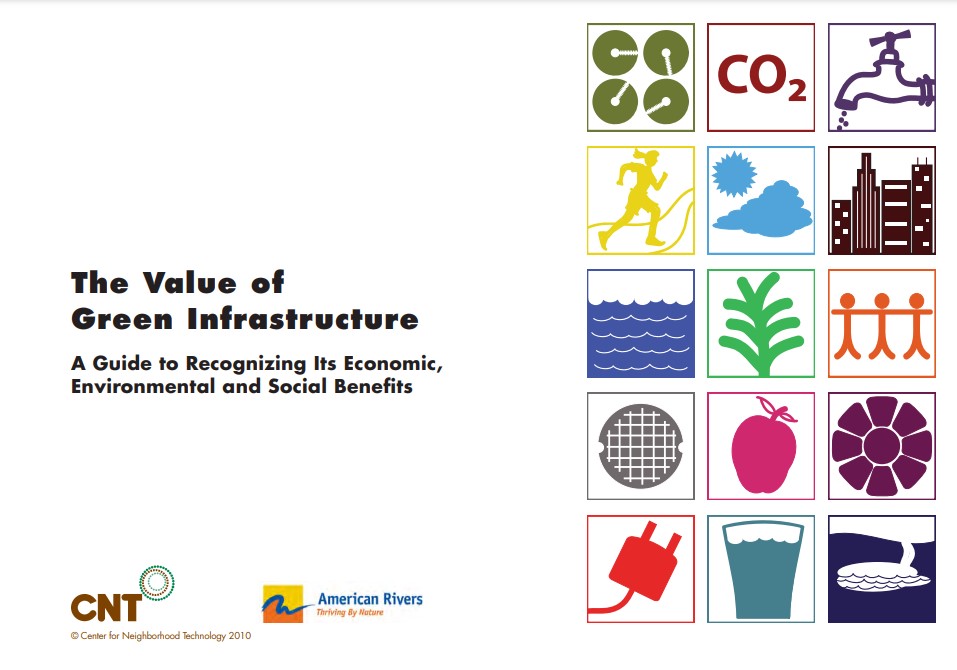Green infrastructure, a network of decentralized stormwater management practices such as green roofs, trees, rain gardens and permeable pavement, captures and infiltrates rain where it falls, reducing stormwater runoff and improving the health of surrounding waterways. These practices provide multiple environmental, economic and social benefits, including, but not limited to: Less polluted stormwater runoff, Improved air quality, Energy savings, Increased property values, and Reduced greenhouse gas emissions.
Green infrastructure’s value as a municipal or private investment depends in part on its effects beyond water management and thus upon a community’s ability to model and measure these additional values. Although valuation of green infrastructure’s monetary benefits has advanced considerably in recent years, it is still a developing field. The 2007 EPA publication Reducing Stormwater Costs through Low Impact Development (LID) Strategies and Practices documented the comparative construction costs of green infrastructure practices in residential construction but did not explore performance benefits. While numerous published studies address either the benefits coming from one type of practice, such as energy implications of green roofs, or the collective impacts of a single practice, such as urban forestry’s impact on water, energy, and other elements, such studies do not achieve a cumulative assessment of multiple benefits.
Due to these gaps in information and methodology, the Center for Neighborhood Technology (CNT) and American Rivers joined forces to outline a method for more accurately valuing the benefits of green infrastructure. The resulting guide, The Value of Green Infrastructure: A Guide to Recognizing Its Economic, Social and Environmental Benefits, establishes a framework that gives practitioners, planners, builders, and city officials the ability to choose infrastructure investments that are effective, efficient, and long-lived. The guide distills key considerations involved in assessing the economic merits of green infrastructure practices within an urban context. It examines the steps necessary to calculate a variety of performance benefits gained by implementing green infrastructure strategies and then, where possible, demonstrates simplified illustrative examples that estimate the magnitude and value of these benefits. In clarifying how to assign value to potential green infrastructure benefits, this guide can assist decision-makers in evaluating options for water management.
A more clear view of green infrastructure’s values will help communities decide where, when and to what extent green infrastructure practices should become part of future planning, development and redevelopment. The guide aims to: Inform decision-makers, practitioners and planners about the multiple benefits green infrastructure delivers to communities and assist communities in valuing the benefits of potential green infrastructure investments.
Framework: The research team worked to develop a comprehensive list of potential benefits gained by the use of five specific green infrastructure practices within an urban context, which are the focus of this guide: Green roofs, Tree planting, Bioretention and infiltration, Permeable pavement, and Water harvesting. An explanation of how particular benefits can be achieved through the practice of specific green infrastructure initiatives is provided within the guide.


